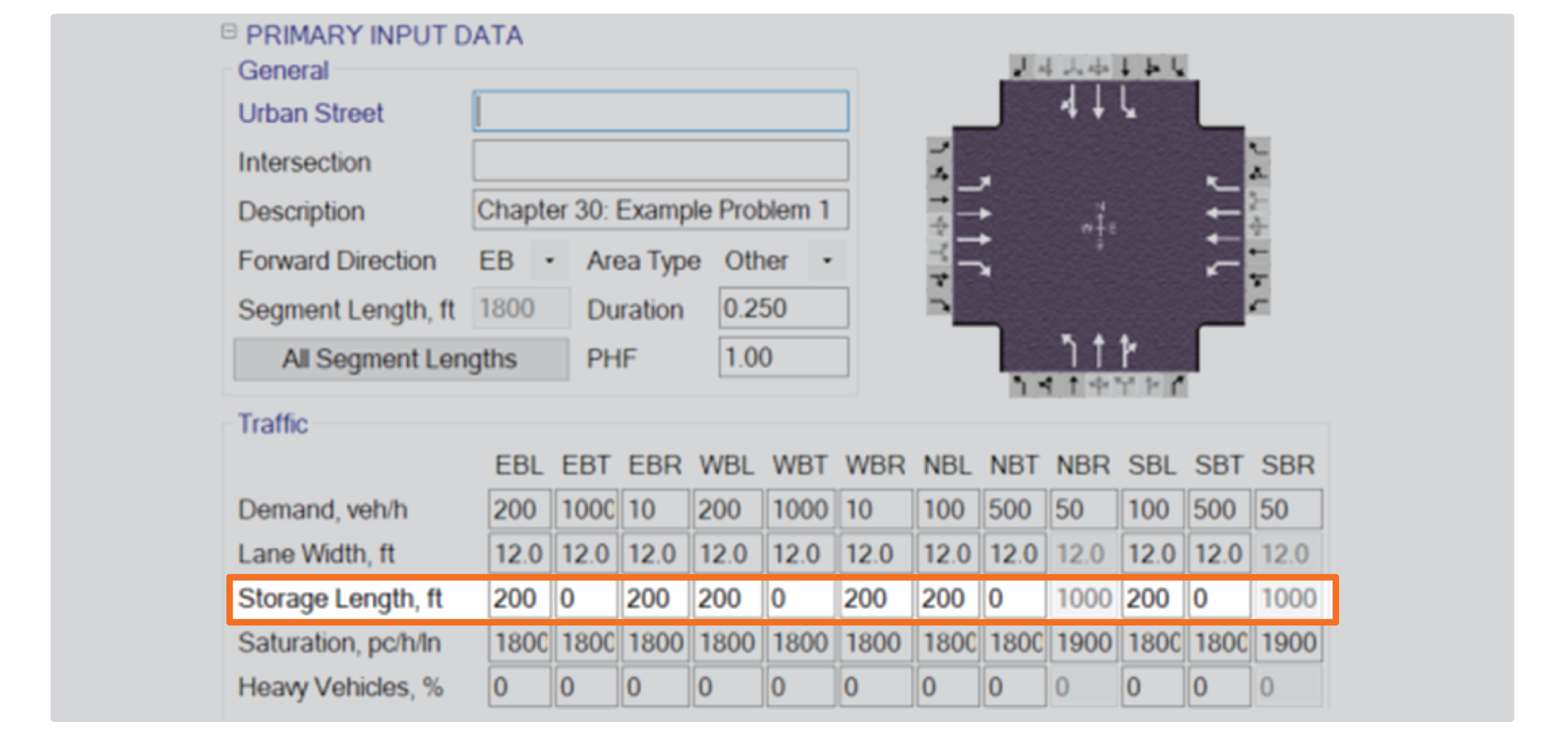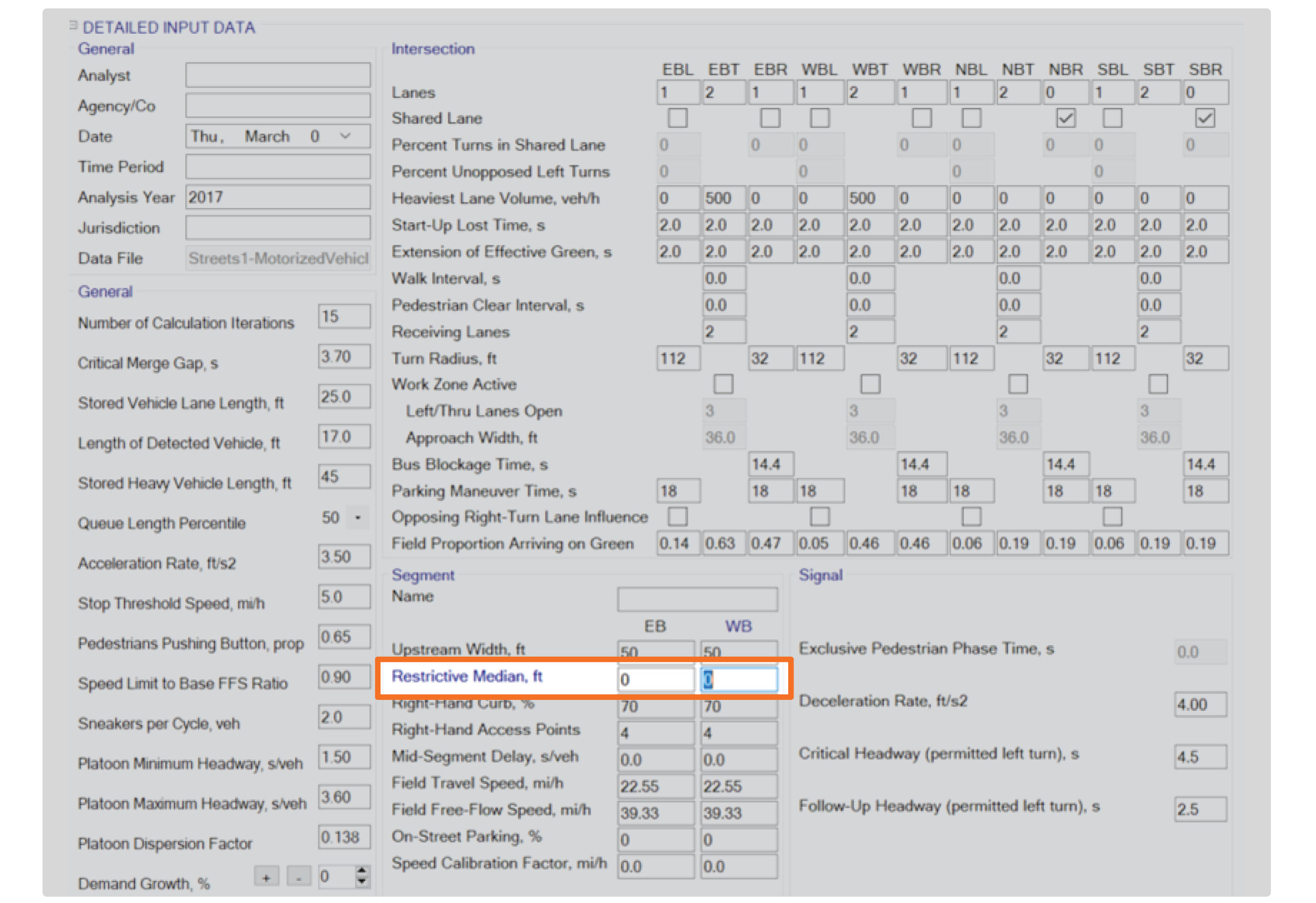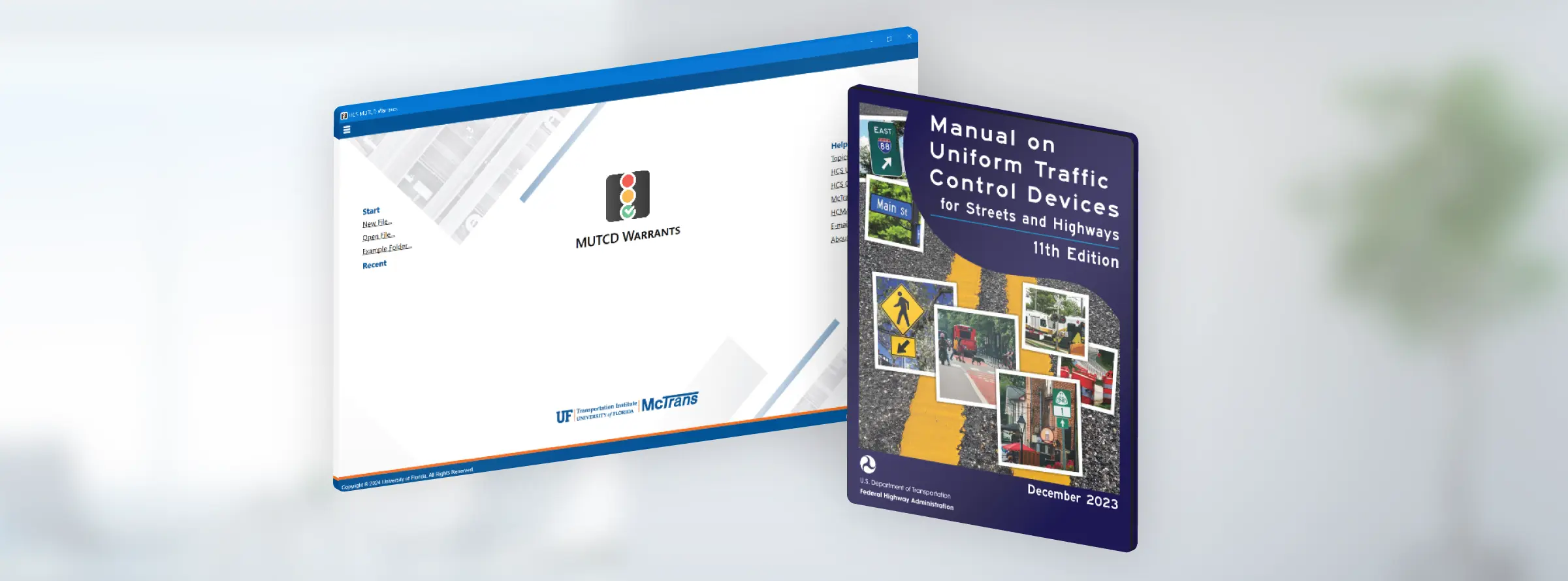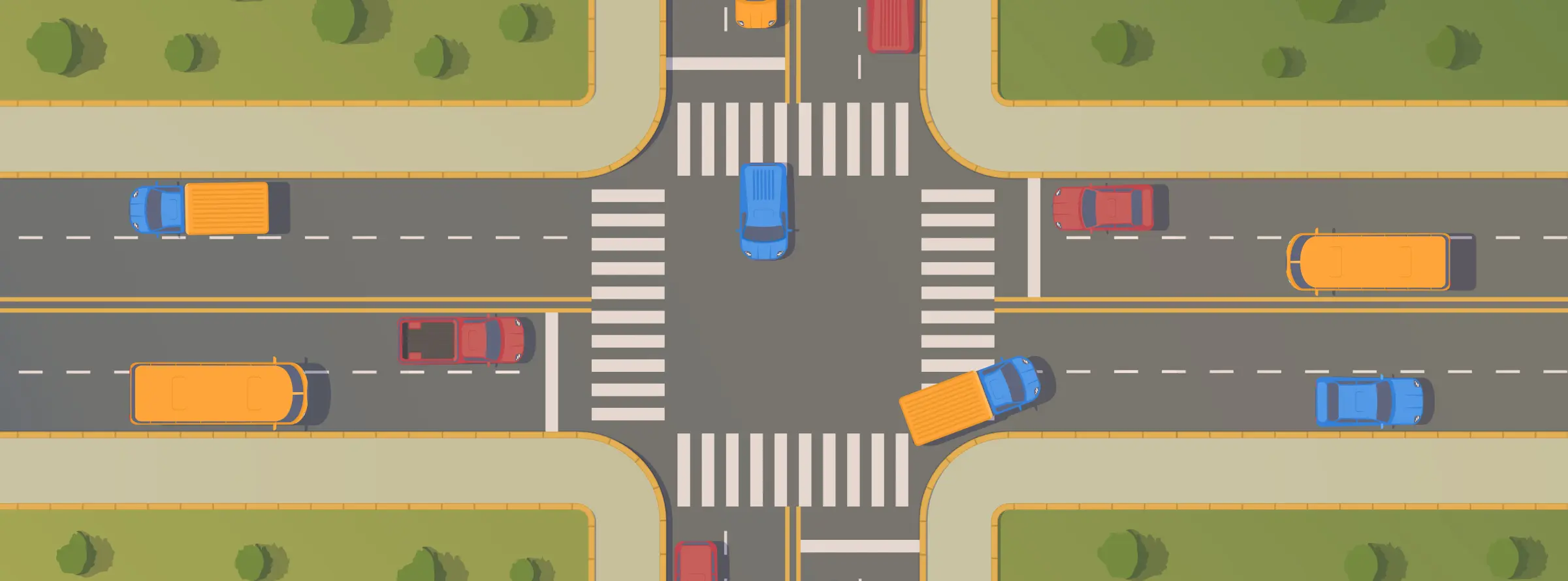A Two-Way Left-Turn lane (TWLTL) is a common design configuration where one central lane allows left-turns from both directions of the main road to local driveways. While this lane configuration can provide much-needed accessibility to local development, how can the traffic analyst incorporate the effects of this design choice on the urban street segments’ level of service analysis using the HCM methodology and the HCS?
The HCM does have recommendations on what the analyst should look at when considering the effect of TWLTL on urban street segments. The following subsection describes two types of effects of TWLTL and how to incorporate them into the HCS analysis.
1. Storage Length Effect
If a two-way left-turn lane is provided for left-turn vehicle storage and adjacent access points exist, 6th Edition of HCM (page 18-18) alerts the user that if a TWLTL is provided, the left-turn storage length (bay length) should represent the effective storage length available to the left-turn movement, which needs to be defined case by case depending on the field or project’s specifications. In the example below, the actual eastbound left-turn storage length is shorter than the total TWLTL, as a stretch of the central lane design contains channelization, which favors access to local development but prevents its use for the storage of EB turning vehicles.
Measuring the Left-Turn Storage Lengths on a segment with a TWLTL
On HCS Streets, the storage lengths for all movements, including left-turns, are found on the main input screen, under the demand and lane width information (see picture).

2. Median Type
The median type on an urban street affects the free flow speed estimation of the segment, and is categorized as “undivided” or “divided.” A divided median can be restrictive (raised curb, islands, or barriers) or nonrestrictive, including the TWLTL design (6th Edition of HCM, page 18-60). Each affects the FFS results differently. On HCS Streets, the median type input is found under the Detailed Input data section of the user interface. It is defined on the software as the length of the median which is restrictive. For a TWLTL, this normally should be set as zero, unless the TWLTL contains islands, in which case the length of all islands and raised curbs should be added and inputted in this field.
 Restrictive Median Input on HCS Streets
Restrictive Median Input on HCS Streets




